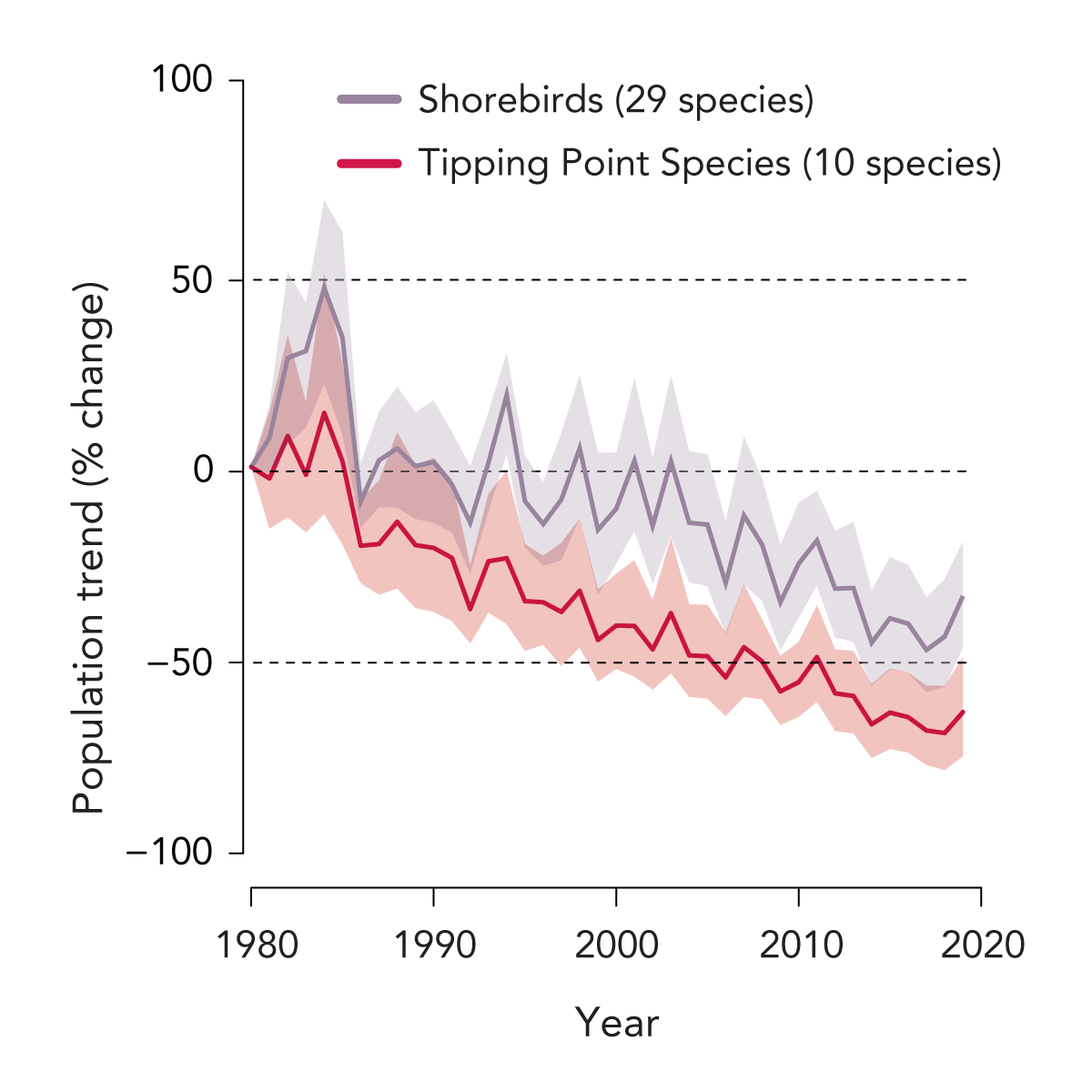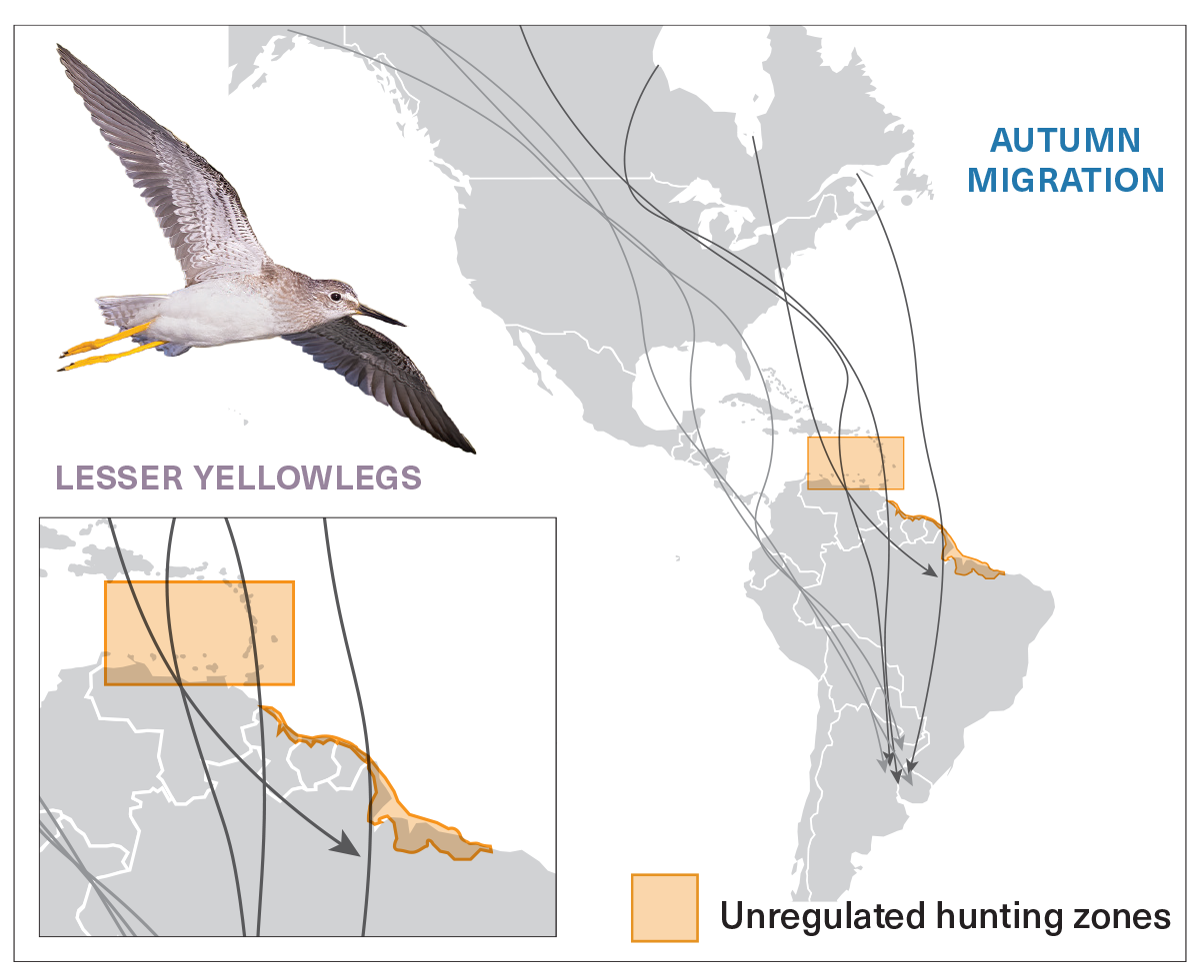Shorebirds
Conservation Spanning the Hemispheres
Status: Steep losses in the last three decades

Many shorebirds make epic long-distance migrations, flying thousands of miles between Arctic breeding grounds and South American wintering areas—and encountering threats throughout the Western Hemisphere. Shorebird populations are down significantly in the last 40 years. Threats include disturbance and loss of stopover habitat along coastal beaches and estuaries, unregulated hunting in the Caribbean and South America, and continued draining of shallow wetlands.
- One-third of shorebirds (10 species) are Tipping Point species with cumulative population losses exceeding 70% since 1980.
- Collaborative international shorebird conservation strategies have been completed in both the Atlantic and Pacific Flyways; a mid-continent shorebird conservation strategy is under development.
GPS Technology Identifies a Driver of Declines For Lesser Yellowlegs

The critical first step in bringing back declining species is to understand how different populations may be exposed to different threats throughout their annual migratory cycle. The steeply declining Lesser Yellowlegs is the most frequently harvested shorebird in Latin America. Scientists used state-of-the-art GPS tracking technology to follow more than 100 Lesser Yellowlegs on migration from breeding areas in Canada and Alaska to their wintering grounds in South America.
The research showed that Lesser Yellowlegs populations that bred in eastern Canada were much more likely to pass through unregulated hunting zones in the Caribbean and northeast coast of South America than the yellowlegs populations from Alaska. With this discovery, biologists can create more targeted and effective management for conservation, such as sustainable harvest regulations and outreach efforts to protect Lesser Yellowlegs on migration.
